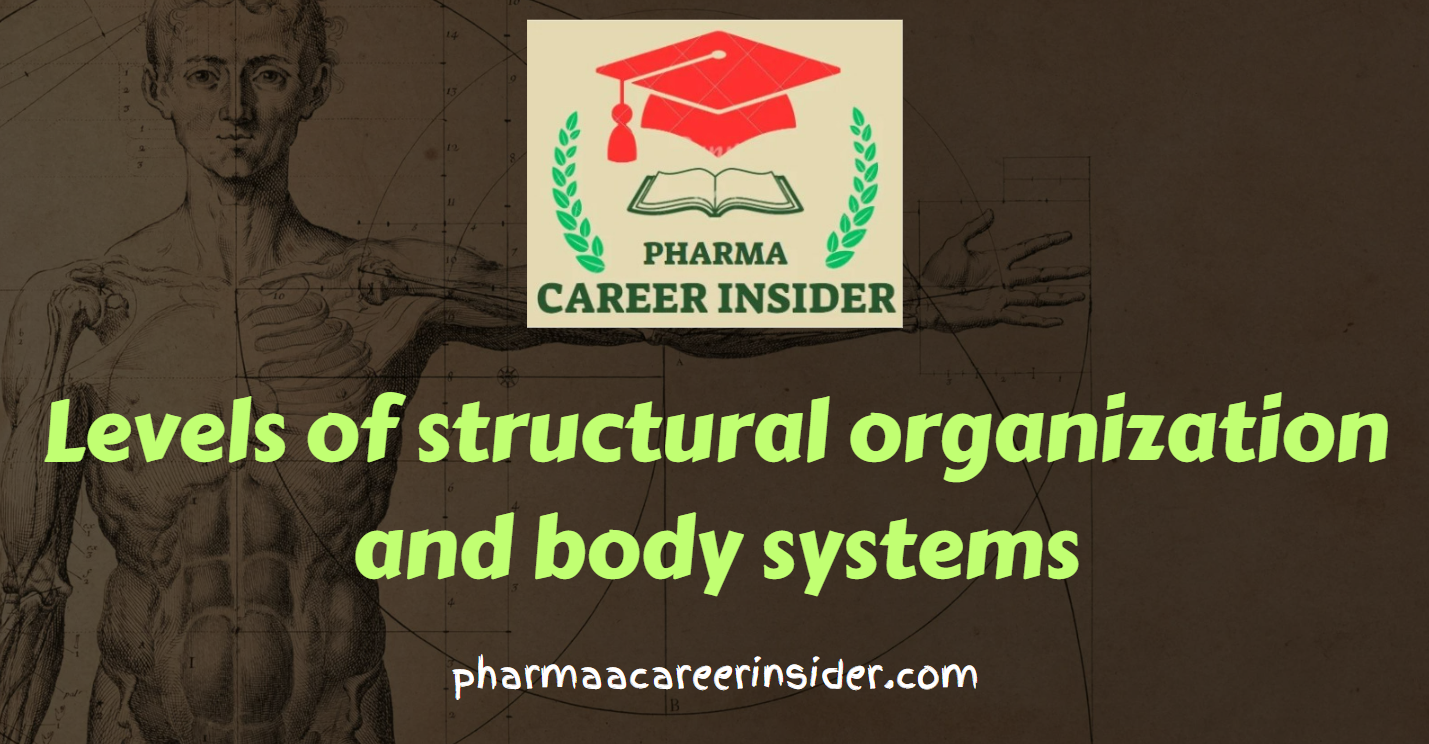The human body’s structure and function are organized into various levels of structural organization, each building upon the previous level to create a complex, highly integrated system. Additionally, the body consists of several interconnected systems, each with its own specialized function.
Levels of Structural Organization:
1. Chemical Level:
This is the most basic level of organization and involves atoms and molecules. Atoms combine to form molecules, such as water, carbohydrates, lipids, proteins, and nucleic acids.
Molecules are the building blocks of cells and are crucial for various biological processes.
2. Cellular Level:
Cells are the smallest living units in the body and are considered the basic structural and functional units of life.
Cells are highly specialized and perform specific functions. Examples include muscle cells, nerve cells, and blood cells.
3. Tissue Level:
Tissues are formed when groups of similar cells work together to perform a common function.
There are four primary types of tissues in the human body: epithelial (lining and covering), connective (support and protection), muscle (movement), and nervous (control and communication).
4. Organ Level:
Organs are composed of multiple tissues working together to perform complex functions. Examples include the heart, lungs, liver, and brain.
Each organ has a specific structure and function critical for overall health and homeostasis.
5. Organ System Level:
Organ systems are groups of organs that work together to perform particular functions and maintain homeostasis. The human body has several organ systems.
Examples of organ systems include the cardiovascular system (heart and blood vessels), respiratory system (lungs and airways), and nervous system (brain and nerves).
6. Organismal Level:
At this level, all the organ systems work together to form a functioning human organism.
The human organism is a highly complex, integrated system capable of maintaining life, responding to stimuli, and adapting to changing environments.
Body Systems:
1. Integumentary System:
Components: Skin, hair, nails, sweat glands, and sebaceous glands.
Functions: Protection, body temperature regulation, sensory reception, and vitamin D synthesis.
2. Skeletal System:
Components: Bones, cartilage, ligaments, and joints.
Functions: Support, protection, movement, mineral storage (calcium and phosphate), and blood cell production (in bone marrow).
3. Muscular System:
Components: Muscles (skeletal, smooth, and cardiac).
Functions: Movement, posture maintenance, heat generation, and organ support.
4. Nervous System:
Components: Brain, spinal cord, nerves, and sensory organs (eyes, ears, etc.).
Functions: Communication, control of bodily functions, perception of sensory information, and coordination of body movements.
5. Endocrine System:
Components: Glands (e.g., pituitary, thyroid, adrenal) and hormones.
Functions: Regulation of various bodily processes through hormone secretion, including growth, metabolism, and reproduction.
Components: Heart, blood vessels, and blood.
Functions: Circulation of oxygen, nutrients, hormones, and removal of waste products; transport of immune cells; regulation of body temperature.
Components: Lungs, airways (trachea, bronchi), and diaphragm.
Functions: Exchange of oxygen and carbon dioxide between the body and the environment; regulation of acidbase balance.
8. Digestive System:
Components: Mouth, esophagus, stomach, intestines, liver, pancreas, and gallbladder.
Functions: Mechanical and chemical digestion of food, absorption of nutrients, and elimination of waste products.
9. Urinary System:
Components: Kidneys, ureters, bladder, and urethra.
Functions: Regulation of fluid and electrolyte balance, filtration of blood, and elimination of waste products.
10. Reproductive System:
Components: Male (testes, penis, etc.) and female (ovaries, uterus, etc.) reproductive organs.
Functions: Reproduction, hormone production, and sexual differentiation.
These body systems work collaboratively to maintain the body’s internal environment, respond to external stimuli, and ensure survival and overall health. Dysfunction in any of these systems can lead to various health issues and diseases, highlighting the importance of understanding the levels of structural organization and the interdependence of body systems in maintaining homeostasis.




